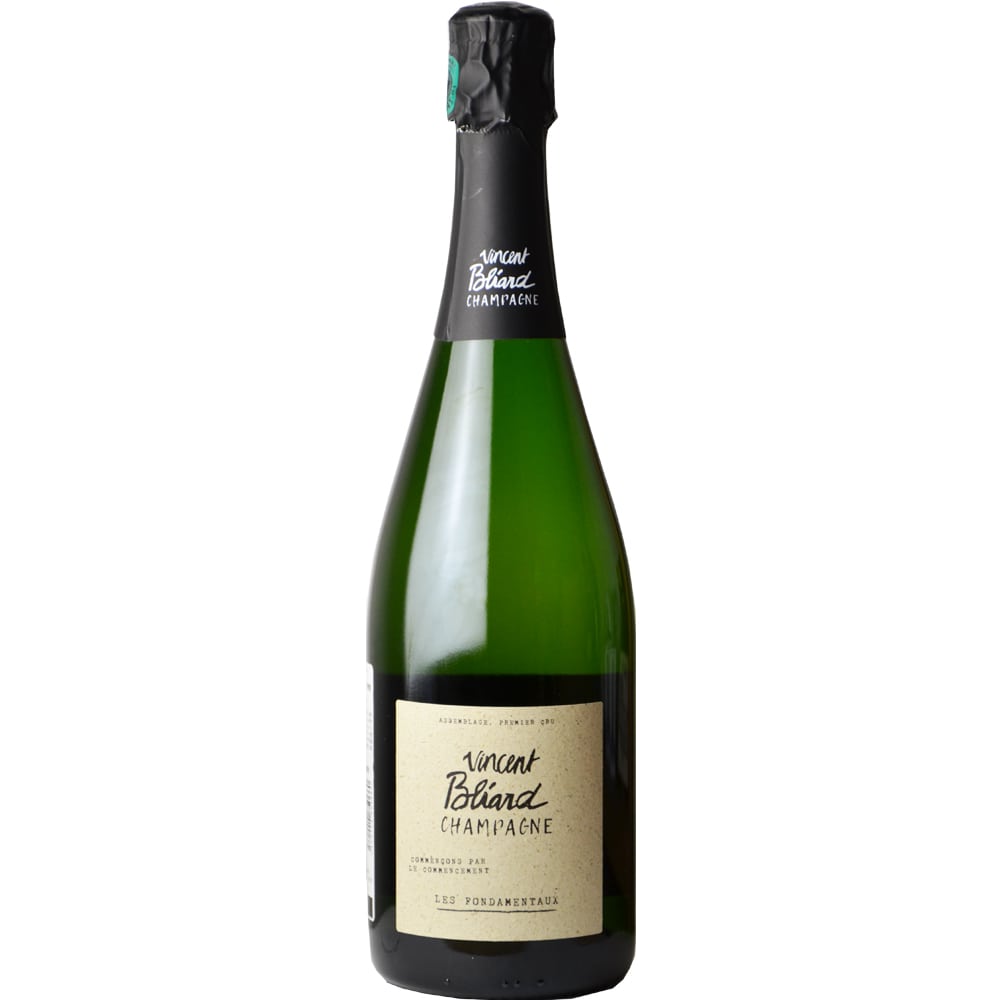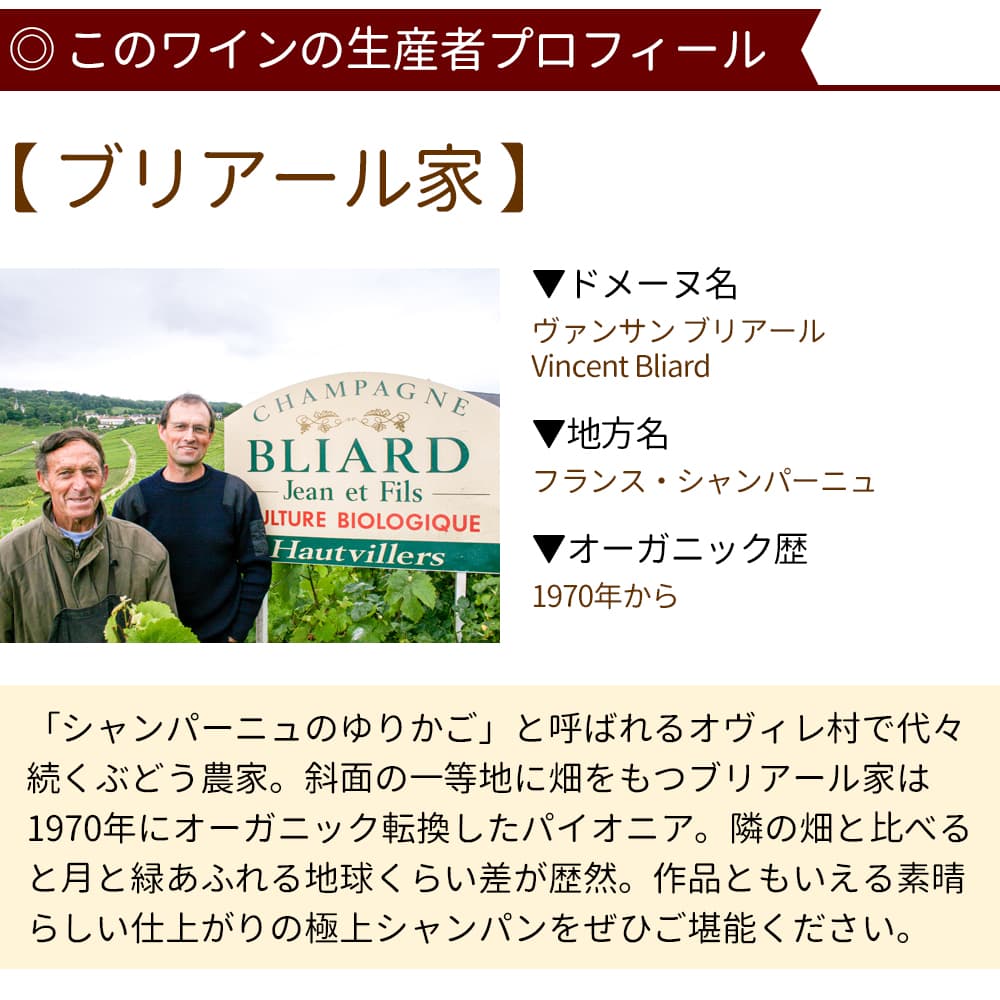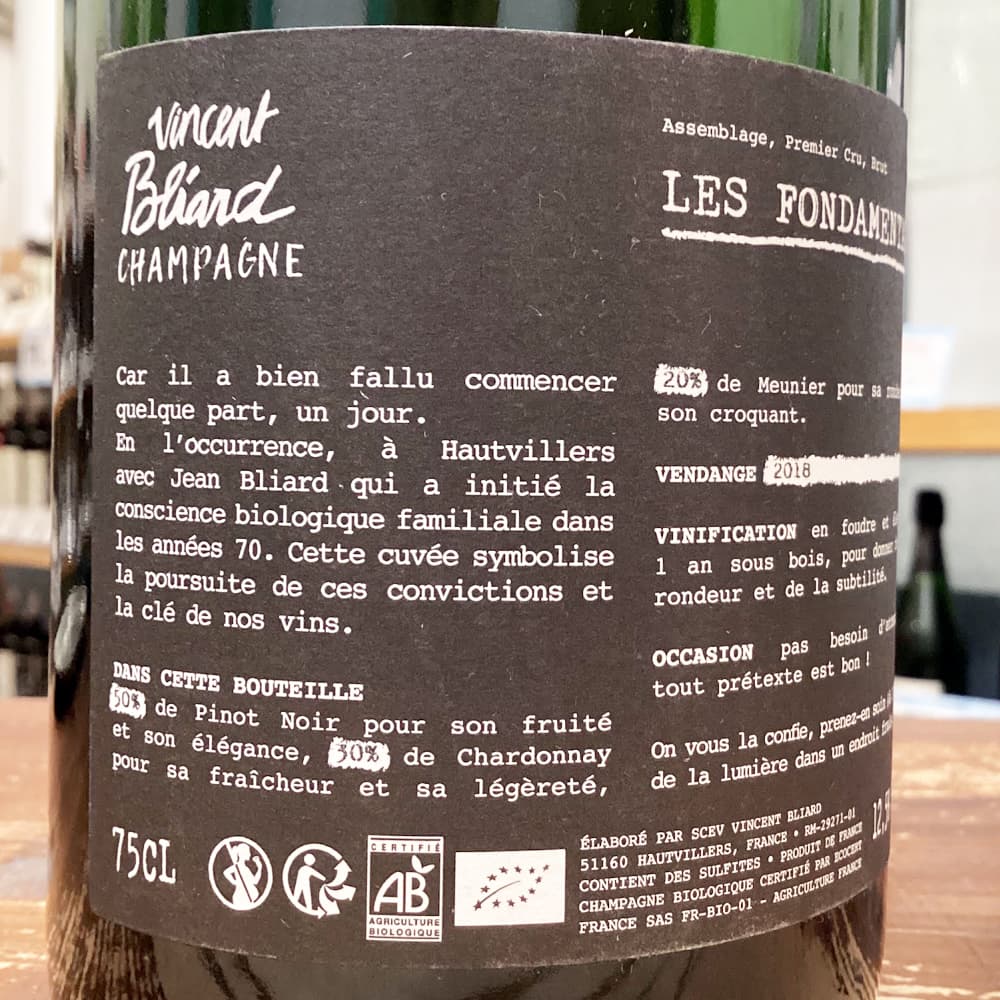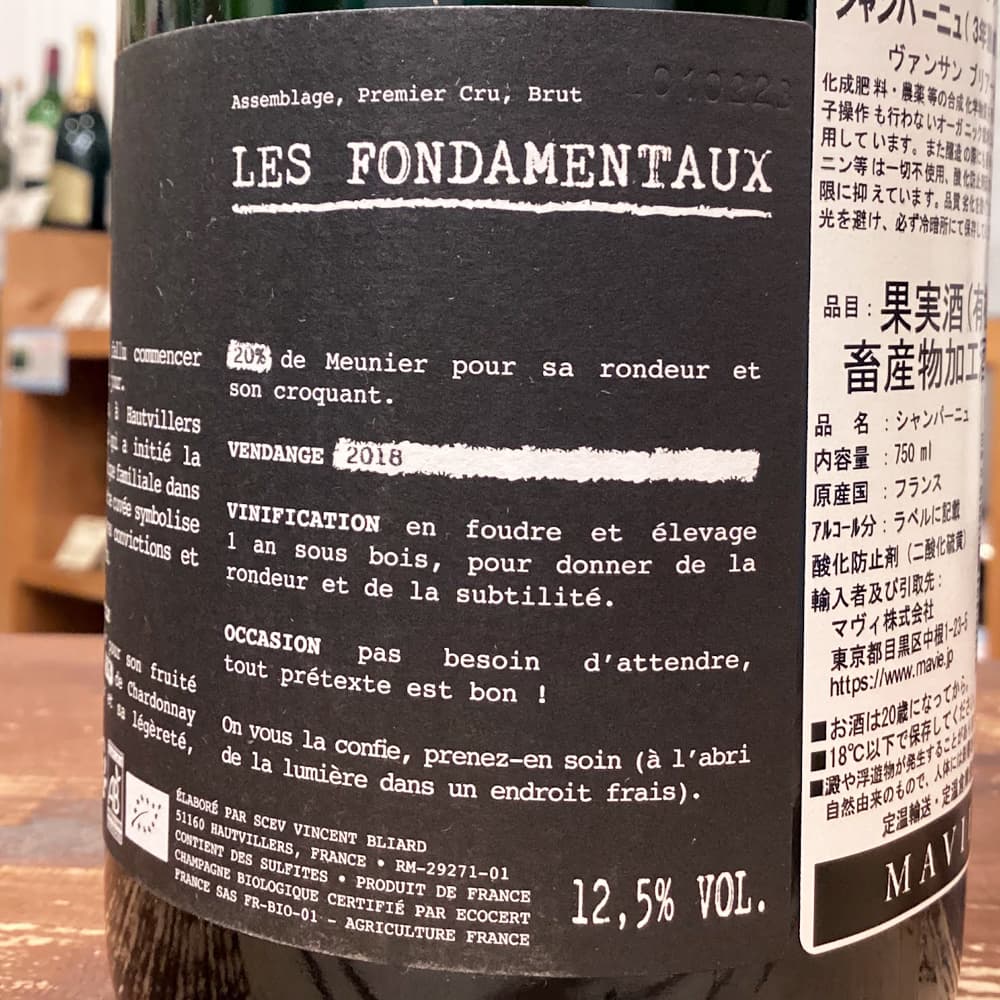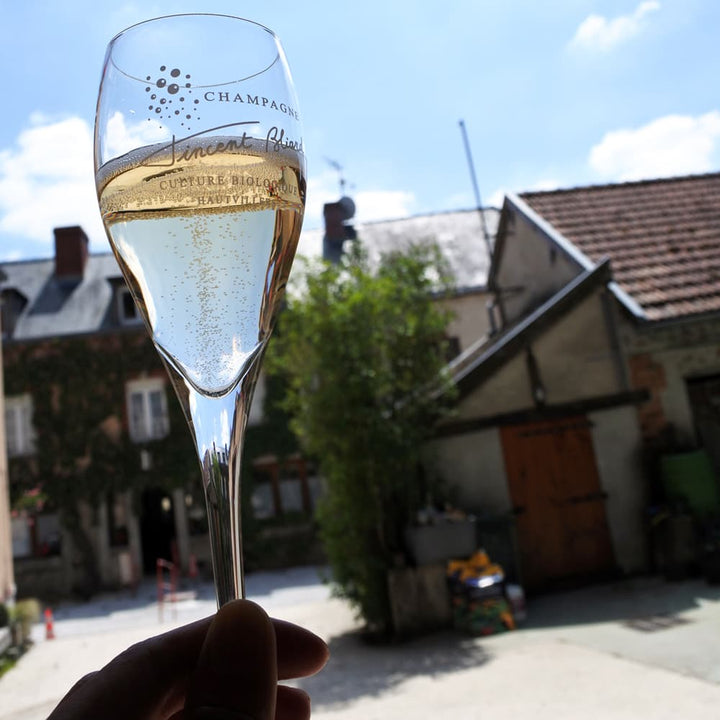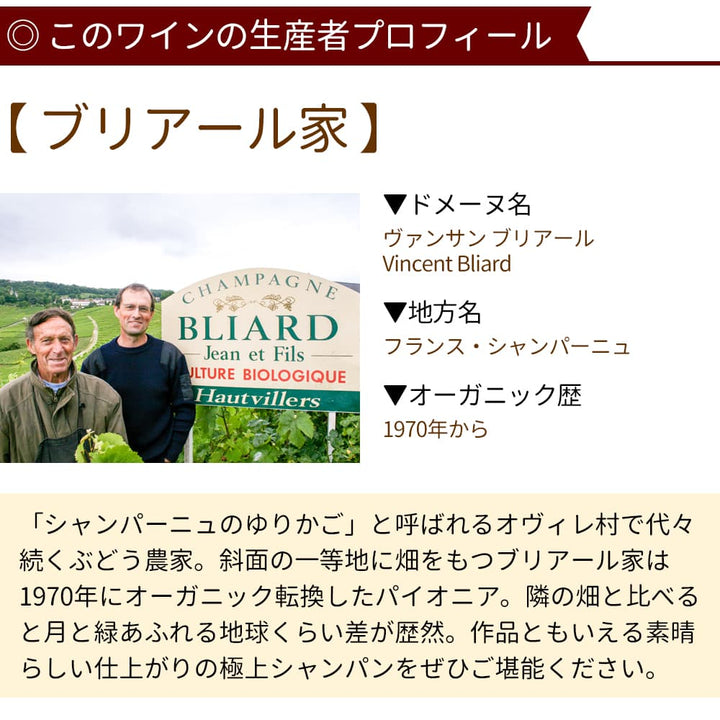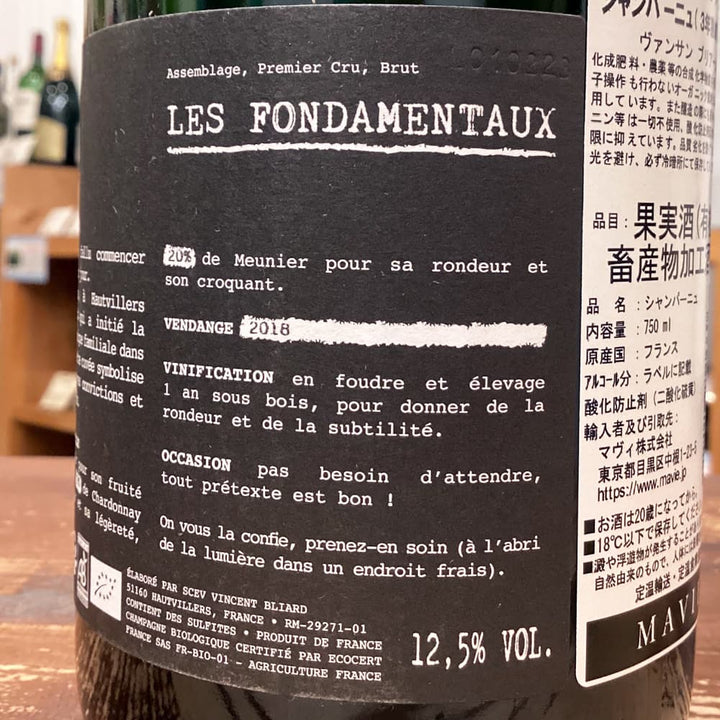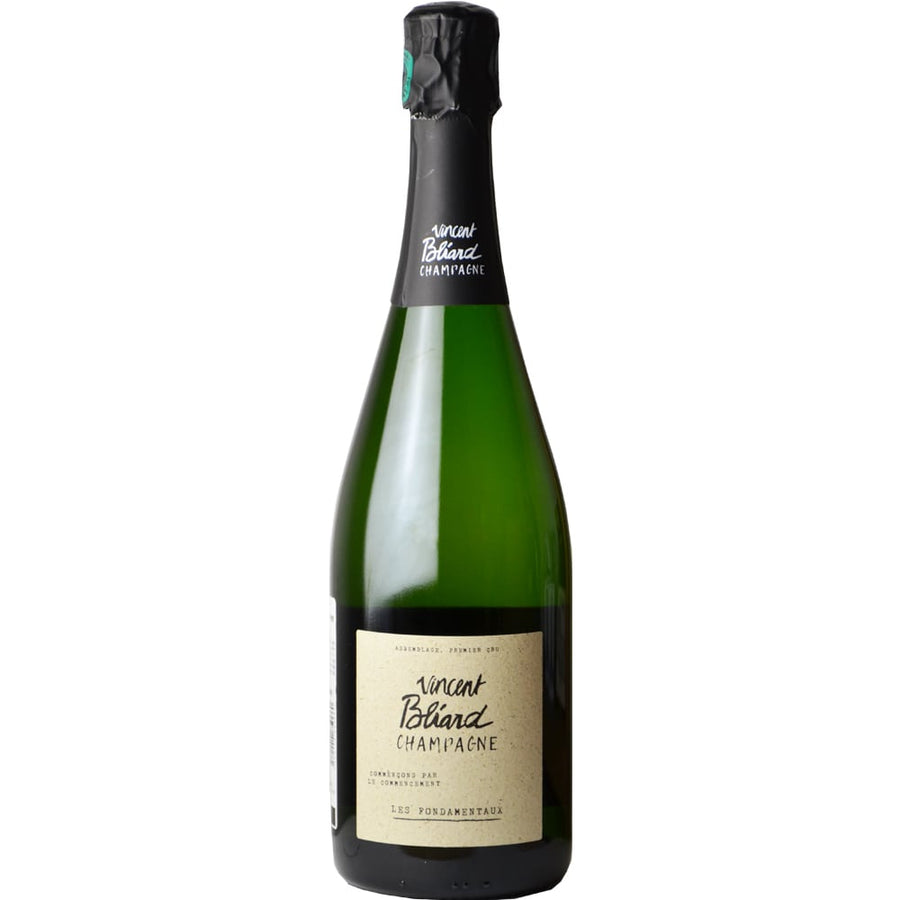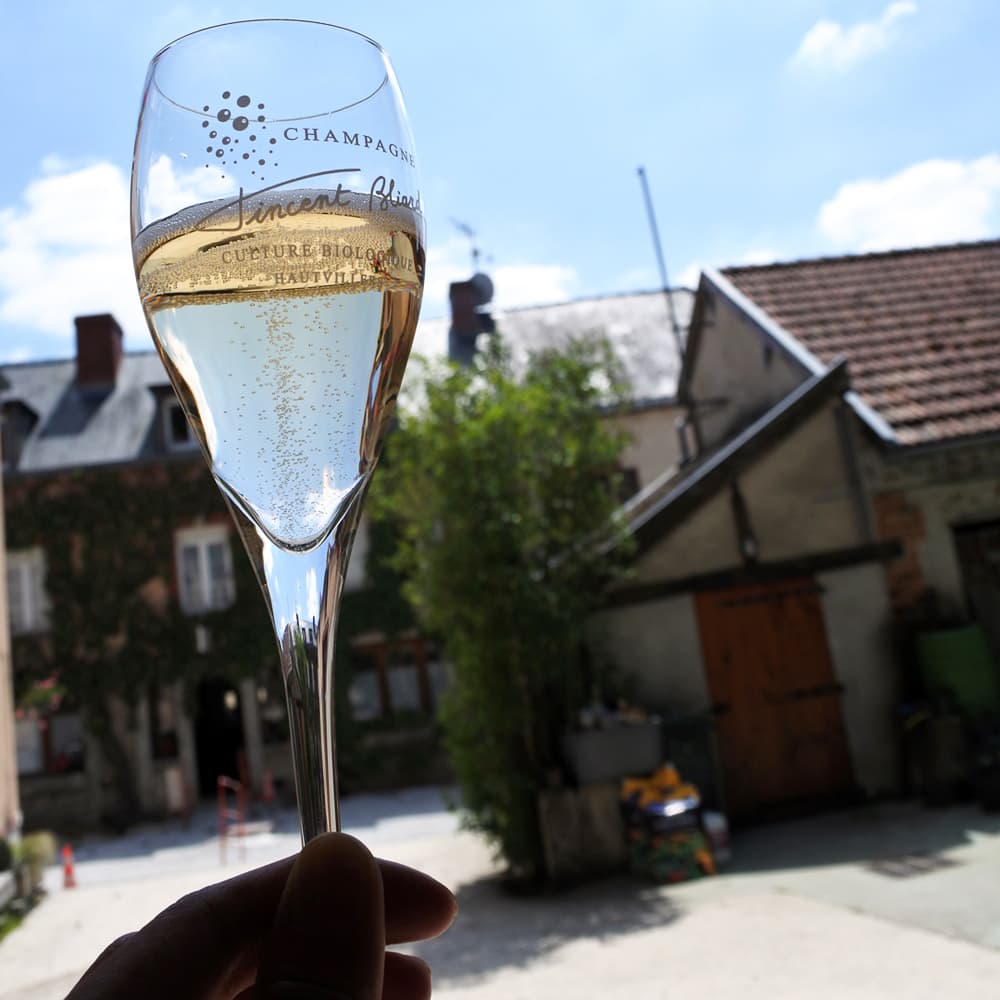This champagne is made in a prime location in the village of Auviller, also known as the "cradle of champagne," and is made by blending Pinot Meunier, Pinot Noir, and Chardonnay grown in the fields of a monastery visited by Dom Pérignon, the creator of champagne, and aging it in the cellar for at least three years. It has a full-bodied taste with a pleasant blend of floral aromas and barrel aromas. This organic champagne is made by RM (Recoltant-Manipulant), where the grapes are grown, brewed, and bottled by one wine farmer.
Wine Details
Type: Sparkling (Brut, dry)
Place of origin: Champagne, France
Producer: Briard family
Capacity: 750ml (full bottle)
Product name: Fruit wine
Taste
Beautiful, fine bubbles rise from the sparkling pale gold.
Once you've chosen your glass, the floral aromas blend pleasantly with the aroma of the oak, and the lingering notes that continue even after it has passed down your throat are very long.
Grape varieties (click on the variety name to go to the explanation page for each variety)
Pinot Meunier, Pinot Noir , Chardonnay
Food that goes well with wine
Perfect as an aperitif. Cocktails (such as Kir Royal made by mixing with cassis liqueur), cheese-flavored choux pastries, white mold cheese, tempura, foie gras pate, smoked salmon, chicken or scallops with champagne sauce, sweetfish, conger eel, saury, fruit, fruit sorbet, etc.
Champagne (aged for 3 years) Food that goes well with sparkling wine
About the Briard family
Vincent Bliard (House of Briard)
Organic history: Since 1970
Located in the village of Auville, known as the "cradle of Champagne." This small-scale producer, which does everything from grape cultivation to brewing and bottling, was able to acquire a vineyard in a prime location on a south-facing slope in the 19th century. Because of its location, it is influenced by both the Atlantic and continental climates. The temperature is low throughout the year and the hours of sunshine are short, but this creates the delicateness that is unique to Champagne. In 1970, when it was said that organic winemaking was impossible in the Yampagne region, the previous head of the Briard family decided to make an organic change. As he says, the soil in the vineyards is overwhelmingly the most important part of the work, and the soil in the vineyards is soft and produces high-quality grapes. Although grape juice can be pressed up to the second pressing, only the juice from the first pressing is used, and the wine continues to uphold the Briard family tradition.


